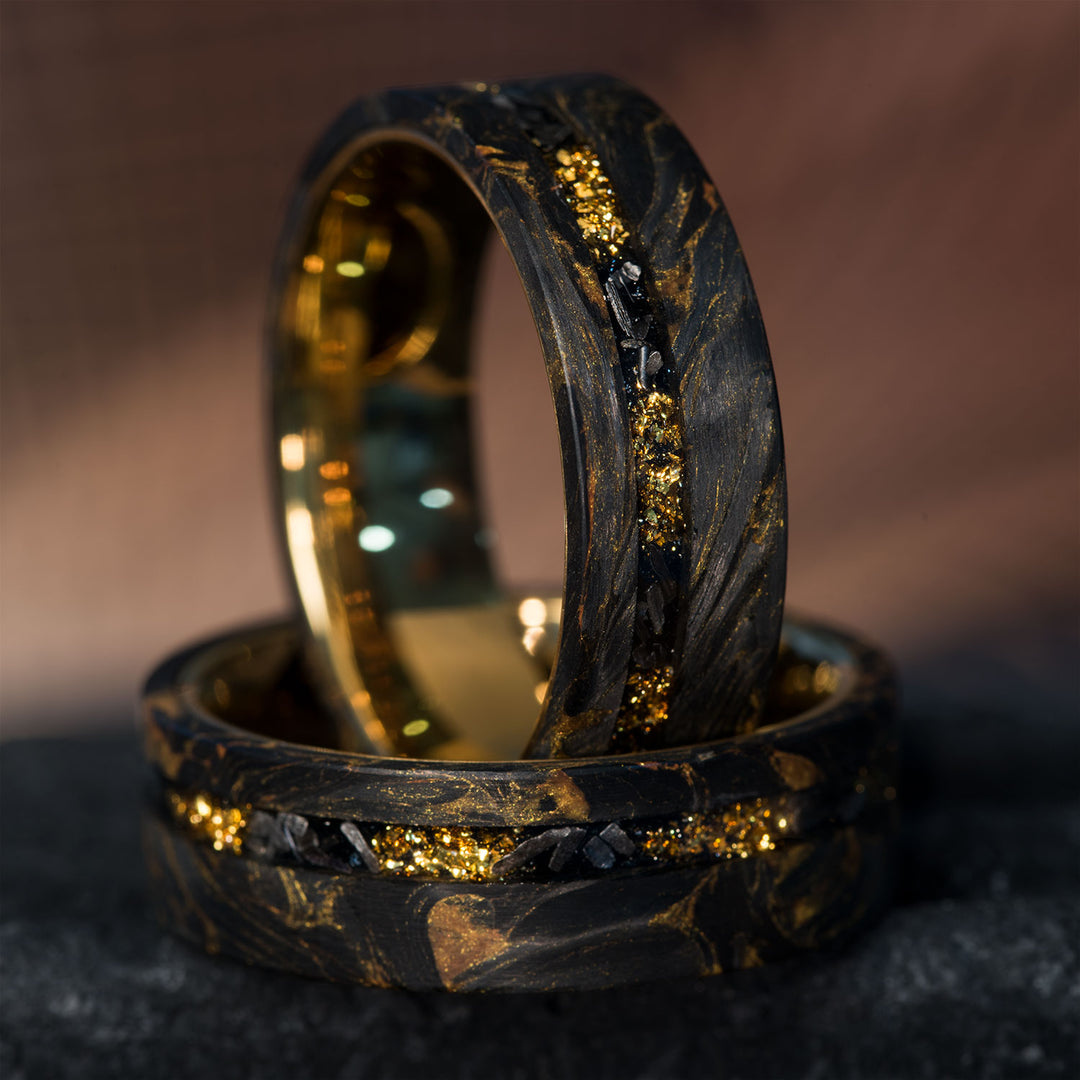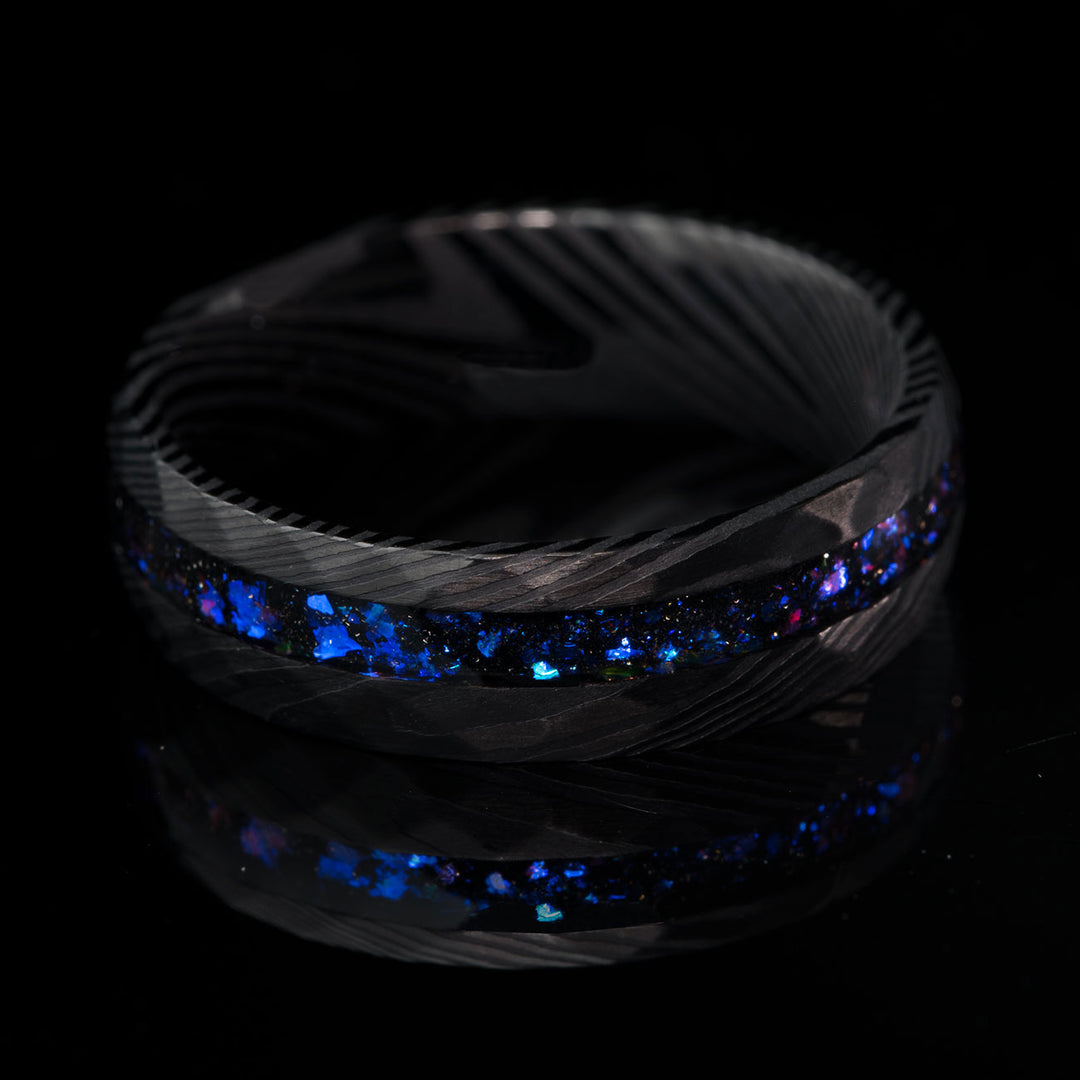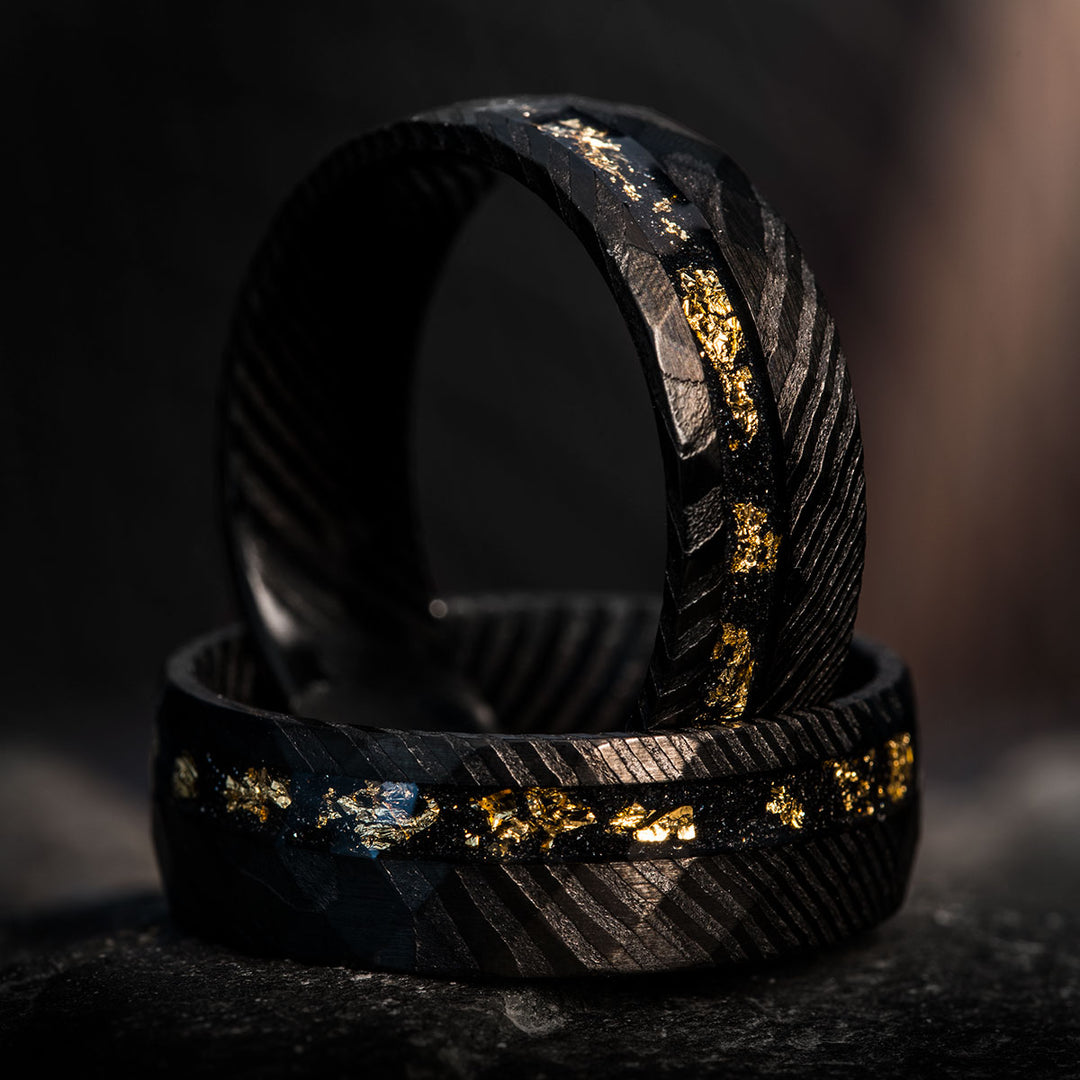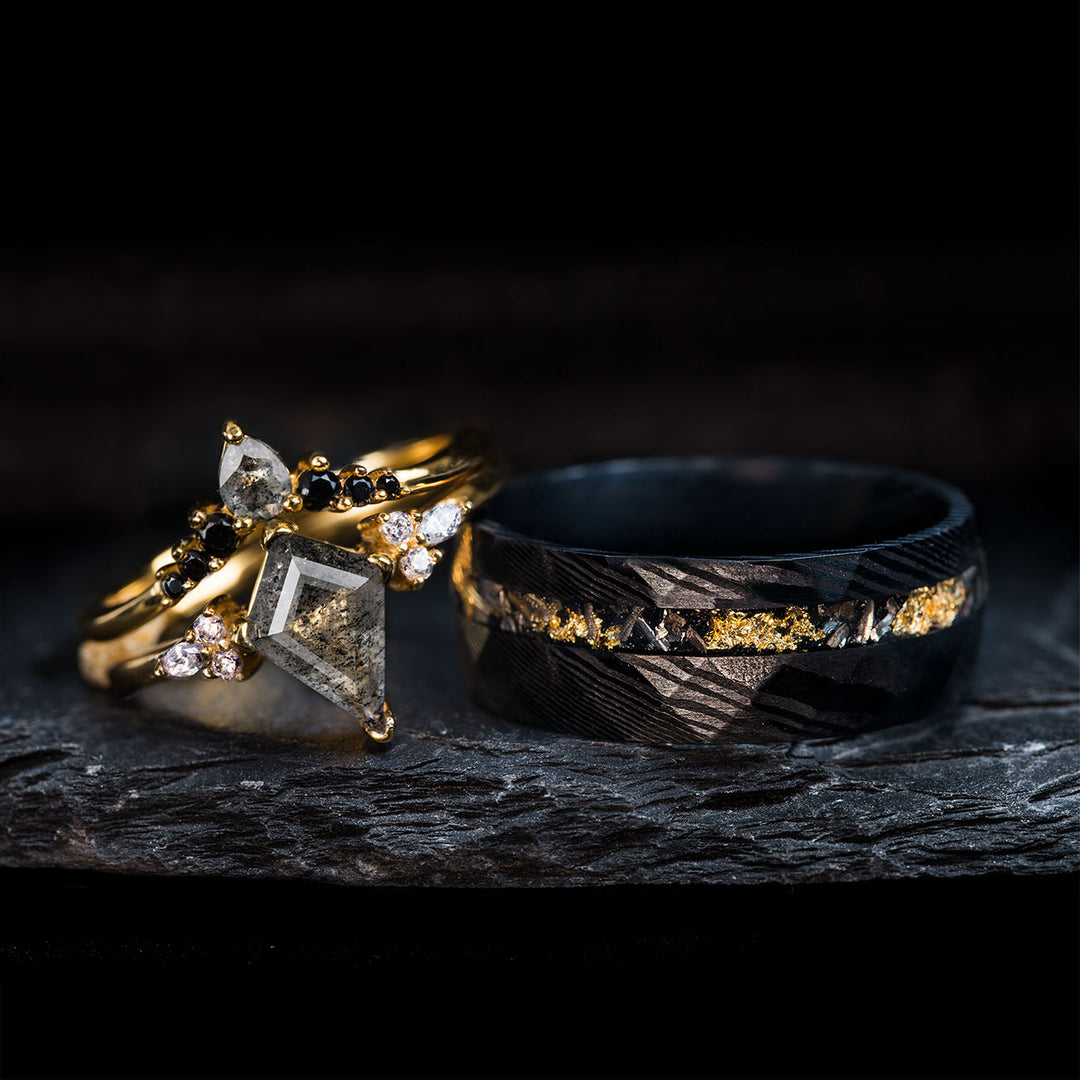It should be fun to find the right ring, but for some people, it can make their skin red, itchy, or irritated. If you've experienced discomfort from jewelry, you might be dealing with a metal allergy. Good news: If you choose a hypoallergenic ring, you can wear pretty jewelry without having to deal with any bad effects. This guide will talk about metal allergies and help you choose the best hypoallergenic ring for your needs.
Why Some Rings Make Your Skin Itch? What is Metal Allergy?
That uncomfortable rash or itchiness appearing after wearing a ring is often a sign of a metal allergy, a type of allergic contact dermatitis. This occurs when your skin reacts to certain metals.
When metals come into contact with your skin, sweat and skin oils can cause them to release tiny particles called ions. For individuals with metal allergies, their immune system mistakenly identifies these ions as harmful invaders, triggering an allergic reaction.
When the ring hits the skin, it can cause redness, itching, swelling, and sometimes blisters or rashes. Long-term exposure can sometimes cause chronic dermatitis, which is marked by ongoing inflammation and dryness. Nickel is often to blame, but cobalt and chromium are two other metals that can also cause these reactions. Because of the constant touch and moisture that gets trapped under a ring, the finger is more likely to get irritated, dry, or crack.
What Does "Hypoallergenic Ring" Really Mean?
The term "hypoallergenic" indicates that a ring has a reduced or low likelihood of causing an allergic reaction or skin irritation.
A hypoallergenic ring is made from materials that are less likely to cause these kinds of reactions. There is no way to know for 100% that a material won't cause allergies in everyone, but hypoallergenic rings make skin problems like ring rash much less likely. Most of the time, these bands are made from metals that are either purer or known to be biologically inert, which means they don't react easily with skin or body fluids. Getting a hypoallergenic ring is a smart move for people who are sensitive to metals or who have previously experienced irritation from jewelry.
8 Top Hypoallergenic Ring Materials for Sensitive Skin
So, If you want to find a hypoallergenic ring that won't bother your skin, some metals are known for being hypoallergenic and good for sensitive skin.
1. Platinum
Platinum rings are one of the best options for people who are allergic to metals. The purity, scarcity, and strength of this valuable metal make it well-known. It is very unlikely that platinum jewelry will contain other metals that could cause an allergic reaction, since platinum is usually 95% pure. Its dense nature keeps it from scratching and tarnishing, so it stays beautiful over time. Platinum's inherent inertness means it doesn't react with skin. This makes it a great and expensive choice for a hypoallergenic ring.
2. Palladium
Palladium is a close relative to platinum and has many of the same good qualities, such as being naturally hypoallergenic. Because it's a lighter metal, it might be more comfortable to wear every day. If you opt for palladium, ensure it is Pure Palladium or Palladium 950 to maintain its hypoallergenic properties. This material has a classy look and is a great option for hypoallergenic wedding rings.
3. Titanium

Titanium is a great choice for people with sensitive skin who want a hypoallergenic ring. Elements of titanium react strongly with air, but when they are alloyed for jewelry, they become very stable and resistant to corrosion. Because of their non-reactive nature, titanium alloys are also great choices for wedding rings. Titanium rings are strong, lightweight, and don't tarnish, scratch, or wear down easily.
4. Tungsten Carbide

Another great choice for a safe ring is tungsten carbide. These rings are very durable, long-lasting, and are very resistant to scratches. Hypoallergenic rings made from tungsten carbide will not tarnish or fade, so it will keep looking good even after years of wear. Its robustness makes it a modern and practical choice for everyday jewelry.
5. Stainless Steel
Surgical stainless steel can be a good hypoallergenic ring material, especially grades that are nickel-free. Stainless steel is an alloy containing chromium, which forms a protective oxide layer on the metal's surface. As a shield, this layer stops corrosion and the release of metal ions that can make people allergic. Its ability to resist tarnishing and corrosion contributes to its hypoallergenic qualities.
6. High-Karat Gold
Gold is still a classic choice, but how safe it is depends on how pure it is. There are no mixed metals in 24-karat gold, so it is pure gold and won't cause any allergic reactions. However, 24k gold is very soft and is not practical to be worn every day. 18-karat gold, which is 75% gold mixed with other metals, is a stronger option that is still less likely to cause allergy issues than lower-karat golds, provided it is nickel-free. When considering a gold hypoallergenic ring, opting for higher karatages and nickel-free alloys is key.
7. Niobium
Niobium is another metal that is thought to be hypoallergenic and good for sensitive skin. It is often used in medical implants due to its biocompatibility.
8. Cobalt
Cobalt, which is often called cobalt chrome, is hypoallergenic and has been used for a long time in the medical and aerospace fields. It is a good choice for a hypoallergenic ring. Cobalt chrome metals are strong and have a white, lustrous look that is similar to platinum.
Materials to Approach with Caution (or Avoid if Allergic)
Some metals are fine for most people, but others often cause allergic reactions. Knowing which ones to be cautious about can save you from an itchy rash.
Nickel
Nickel is a top cause of metal allergies. It's used in a lot of costume jewelry and mixed into other metals to prevent rust and add shine. Even a little bit of nickel can make sensitive skin red, itchy, or blister. If you need a ring that won't cause allergies, look for one that's nickel-free.
Cobalt (in certain forms/individuals)
While cobalt chrome is often hypoallergenic, elemental cobalt found in some metal mixes can sometimes irritate skin, much like nickel. It's good to distinguish what kind of cobalt is in the jewelry.
Copper
Copper has a unique look but is another metal that can cause allergies. It's often mixed with gold, especially rose gold, for color and strength. If you're sensitive to copper, be careful with jewelry that has it mixed in, as even trace amounts might lead to a reaction.
Palladium (for some individuals)
Palladium is usually considered safe for sensitive skin. However, it shares some traits with nickel, so a small number of people with nickel allergies might also react to palladium. It's often used in wedding rings. If you have a strong nickel allergy, you might want to test for palladium or choose a different material.
Lower-Karat Gold (like 14k or 10k)
Gold with lower karat numbers, such as 14k (about 58% gold) or 10k (about 42% gold), has more other metals mixed in. These can include nickel, copper, or silver, making an allergic reaction more likely. If you have sensitive skin, higher-karat gold or another safe material is usually a better choice.
Sterling Silver
Most sterling silver is 92.5% silver, and the other 7.5% is usually copper. Sometimes, nickel can be in sterling silver too. This can be an issue if you have metal allergies. Look for nickel-free sterling silver or pick a different material if you're highly sensitive.
How to Test for a Metal Allergy
If you think you might be allergic to certain metals and want to know which ones before buying a ring, there are ways to find out.
Patch Test
This is the most common test doctors use.
- Tiny amounts of different metals are put on small sticky patches.
- The doctor sticks these patches on your skin, usually your back.
- You'll wear them for about two days, keeping them dry.
- After the doctor takes them off, they'll check your skin for reactions like redness or bumps over the next few days. This may involve a few visits.

Blood Test (LTT)
This is a less common option.
- A lab takes a sample of your blood.
- They mix your white blood cells with different metals to see how they react.
- Only a few labs offer this test.
Good to know: Skin prick tests used for food or pollen allergies don't work for metal allergies.
At-Home Test Kits
Some kits let you test yourself at home for common metal allergies without needing a doctor's visit first. These often test for metals found in medical devices or jewelry.
[[推荐商品1]]
Choose Your Hypoallergenic Wedding Ring with Confidence
Your ring is a little piece of your story, a flash of personality on your hand. It should make you smile, not itch. You can feel good about your choice now that you know which metals are safe for sensitive skin. Choose a pretty band made of platinum, titanium, or tungsten carbide, which are all safe for your skin. They can also be high-purity and nickel-free. This way, your chosen ring will be a kind, happy friend who shines brightly for all the days to come without giving you a single itch.









